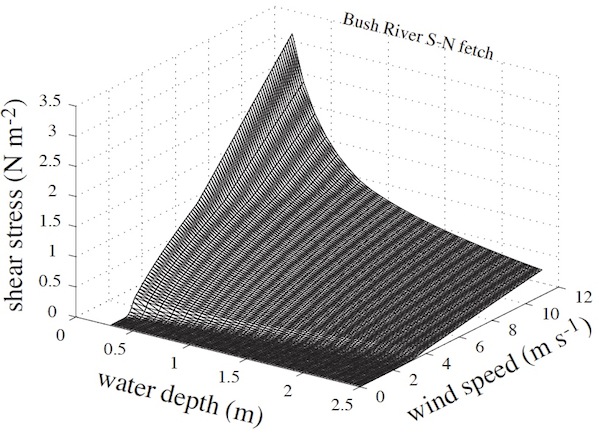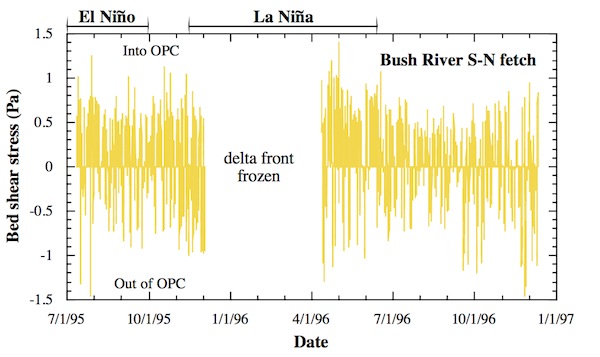TFD Sediment Transport
Background
Sediment yield from 300 years of deforestation, intensive agriculture, and urbanization has built countless deltas throughout Chesapeake Bay tributaries. At present, sediment delivered to such deltas may be frequently redistributed locally, sequestered beneath mudflats and marshes, or exported to the main bay depending on the local manifestation of estuarine processes acting on different spatial and temporal scales.
Purpose
This study sought to estimate the event-based frequency and competence of wind-driven sediment resuspension on one such delta. It also sought to assess the likely transport direction of resuspended sediment to assess the risk such legacy deposits pose for main bay water quality management.
Data
From 1995-1997 data was collected on hydro meteorological and intertidal sedimentation processes occurring on the Otter Point Creek delta at the head of the Bush River tributary near the head of the estuary.
Wind-Wave Model
Hourly wind-wave conditions and sediment entrainment were predicted using standard models and compared against observed biweekly and seasonal intertidal sedimentation patterns.
Results
Sensitivity Analysis
It is possible to assess the relative roles of wind speed, water depth, and fetch in determining the magnitude of bed shear stress. Calculated bed shear stresses were found to increase as a smoothly varying function as wind speed increased and water depth decreased. For any value of wind speed and water depth, the Bush River S-N fetch generated the highest bed shear stresses, as expected due to its longest fetch.

OPC Wind-Wave Bed Shear Stress
Amazingly, sediment may be resuspended from the delta’s subtidal and intertidal mudflats every 3-5 hours, with the most resuspension occurring in spring and autumn. Given the long settling times of fine sediment, Otter Point Creek is in a nearly constant state of high turbidity. Net sediment transport is directed upslope to intertidal marshes, but on any given day significant sediment load from the delta is also exported to the main bay.

Discussion
The management implication of this study is that the benefits of on-going reductions in watershed-derived sediment, nutrient, and toxic pollution to Chesapeake Bay could potentially be delayed for decades to centuries by the continuous loading from legacy pollution stored in subestuarine deltas.


